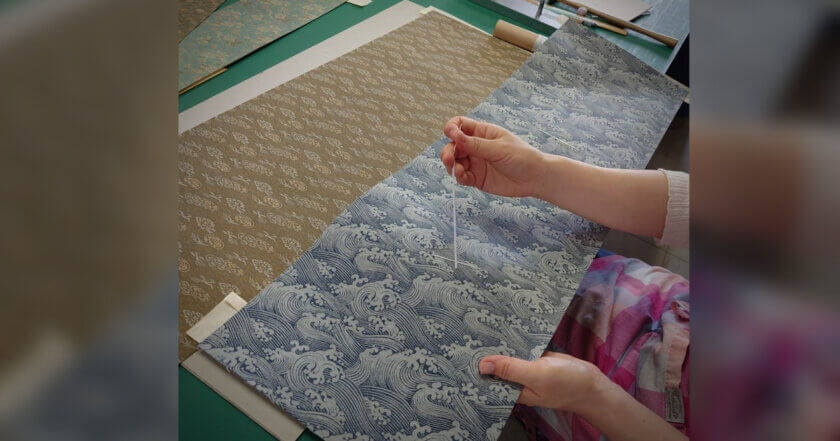Unique Shikishi-gake & Tanzaku-gake Scrolls Request from Italy

Our company receives requests for hanging scroll productions from all over the world.
Among these, we often encounter requests for scroll types that we have never made before.
This time, we would like to introduce a special order received from a customer in Italy.
The request was for a hanging scroll capable of displaying different sizes of shikishi and tanzaku.
While in Japan, there are hanging scrolls, known as ‘shikitan-gake’, that allow for the interchange of shikishi and tanzaku, this request was unique.

shikitan-gake
The customer requested two types of hanging scrolls: one to display standard size shikishi and small shikishi, and the other to display tanzaku and small shikishi. (We also received an order for normal tanzaku-gake scrolls.)
‘We were excited to take on this challenge, a request that truly transcends the norms of Japanese tradition,’ we thought.
The process of creating a custom hanging scroll starts with drafting and involves meticulous adjustments throughout. It is a labor-intensive process, but knowing that the charm of hanging scrolls is being spread worldwide and enjoyed by many boosts our motivation immensely.
Furthermore, the customer requested an innovative feature – the ability to display small shikishi, which are normally hung vertically, in a horizontal orientation.
‘It’s an truly amazing request that goes beyond the typical Japanese conventions,’ we thought.
Excited by this challenge, we eagerly embarked on the task.
The production of custom-made hanging scrolls begins with the creation of drawings and requires detailed adjustments.
It is a labor-intensive process, but knowing that the charm of hanging scrolls is being spread worldwide and enjoyed by many boosts our motivation immensely.
The completed scrolls, while preserving the traditional Japanese aesthetic, embodies a new realm of possibilities.
The customer was very satisfied with the final products, much to our delight.
We at our company are always ready to cater to such bespoke requests for shikishi-gake & tanzaku-gake scrolls.
If you have any inquiries or special requests regarding hanging scrolls, please feel free to contact us.
We are dedicated to crafting each piece with care, aiming to share the beauty of Japanese art with customers around the world.

